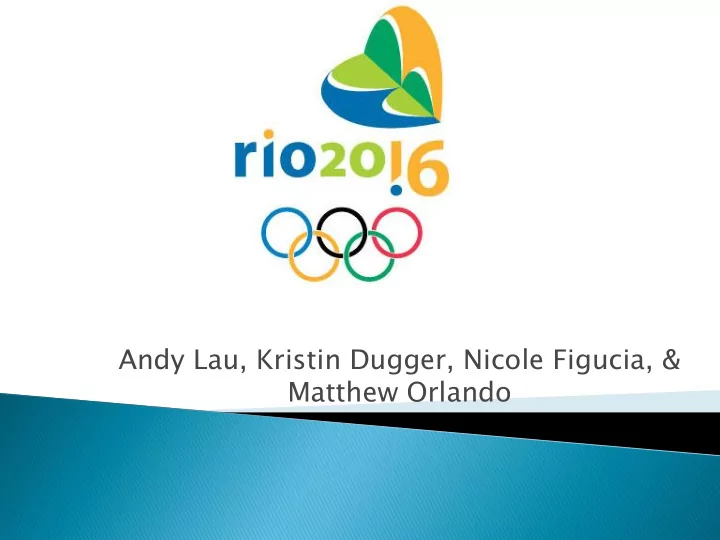

Andy Lau, Kristin Dugger, Nicole Figucia, & Matthew Orlando
Second largest city in Brazil Radical topography causes problems with transportation ◦ Sea ◦ Mountains ◦ Funneled road network
Buses Taxis Private cars Metro Railroads Ferries
Cheap Effective-throughout entire city Problems: ◦ Decreasing quality ◦ Lack of authority ◦ Increasing travel time ◦ Somewhat risky (pickpockets)
Taxis are easily available Notoriously difficult to drive Congestion: 84% travelers stop at a node in the city Designed for political reasons, not U-O New roads increase traffic because of increased dependency on cars (double since 2000) and high incentive to switch paths Nicer roads have high tolls (private)
• Small but expanding? (constant change) • Fairly reliable • Used mostly by tourists • Terrain causes difficulties • New routes immediately saturated due to high incentives to switch -congestion leads to longer travel times
Used to be point of pride, now barely used Largest rail grid in Brazil ◦ Both urban and suburban ◦ Mostly used by lower class
Rio’s ports carry the third highest amount of cargo in Brazil Ferries carry about 175,000 travelers per day System is stretched beyond capacity
300 Individual Competitions 30 Competition Venues (plus training venues) 4 to 8 million Spectators 150,000 to 200,000 Accredited Persons Additional Traffic Flow of 1.5 to 2 million journeys per day to Rio’s already 11.5 million journeys per day
Barra ◦ Olympic & Media Villages Copacabana ◦ Outdoor Sports Deodoro ◦ Other Venues will be constructed. Maracana ◦ Athletic Stadium & Opening Ceremonies
High capacity roads Public transport system
Railway improvements Improvements to the existing Antonio Carlos Jobim International Airport
A six-lane motorway planned to link two of the event sites “The residents (of Rio) stand to 100 km (62 miles) of Bus Rapid gain more metro lines, more trains, Transit to connect three of the four zones more sewage treatment, more in terms of the environment, and Improvements to metro and social services” suburban rail will connect the Sergio Cabral fourth link to Copacabana Rio’s Governor Improvements to runways and passenger terminals are proposed Half of the athletes will be able to reach their venues in less than 10 minutes.
$11 billion from Rio’s government Counting on continued tourism Planned improvements in preparation for the 2014 World Cup
Mode of transportation: Buses, Subway and Taxis 5 Million people use Subway everyday 10 Million people use Buses everyday 3.12 Million cars operate on roads everyday
Rush hour lasting 11 hours a day People spend1hr 23 min everyday on travel to workplace. However, their working hours is only 6hrs 12min
7:30 30a.m a.m
Beijing had 3 new subways lines in service before the Games. In addition, another 9 lines are under construction. Beijing applied security measures right before the Games, strengthened the measures during the Games, and kept them after the Olympics
Successful increased security measures for the Games have remained in place ◦ Since June 2008, more than 55,000 suspected items have been found (explosives, cutting tools) ◦ 20,000 people carrying prohibited items have been declined entry to the subway Dramatic increase in public transportation useage since new subway security measures put in place, increasing the building and planning of more subways and reducing the public traffic on the roads
Progress in the organization of bus stations New bus routes opened to link new residential communities to the rest of the city Daily number of passengers has increase from 9.65 million to 14.57 million 1/3 of the people in Beijing choose to take a bus to go out, increase of 7%
During the Olympics, Beijing imposed a traffic ban based on an odd-even license plate system ◦ The restrictions, based on license plate numbers, took about 1/5 of the city's 3.61 million vehicles off the roads each weekday Initiative took 45% of the cars off the roads and helped clear the skies
Figures released by the Beijing Transportation Research Center show that traffic jams were reduced by 5 hours and 15 minutes a day during the 6 months since the post-Olympics restrictions have been in effect In addition vehicular emissions were reduced by 10% every day
Unfortunately, the ban was lifted in September and the traffic jams returned. The return to Beijing's traffic and smog-heavy status quo will mark the end of what may have been the world's largest pollution control experiment: a restriction on cars, factories and construction that lasted for two months and resulted in the clearest skies Beijing has seen in a decade and raised vehicle speeds 10%.
The Olympic Games hold a lot of power over a given host city’s transportation networks. If good habits are created they should be maintained.
Recommend
More recommend